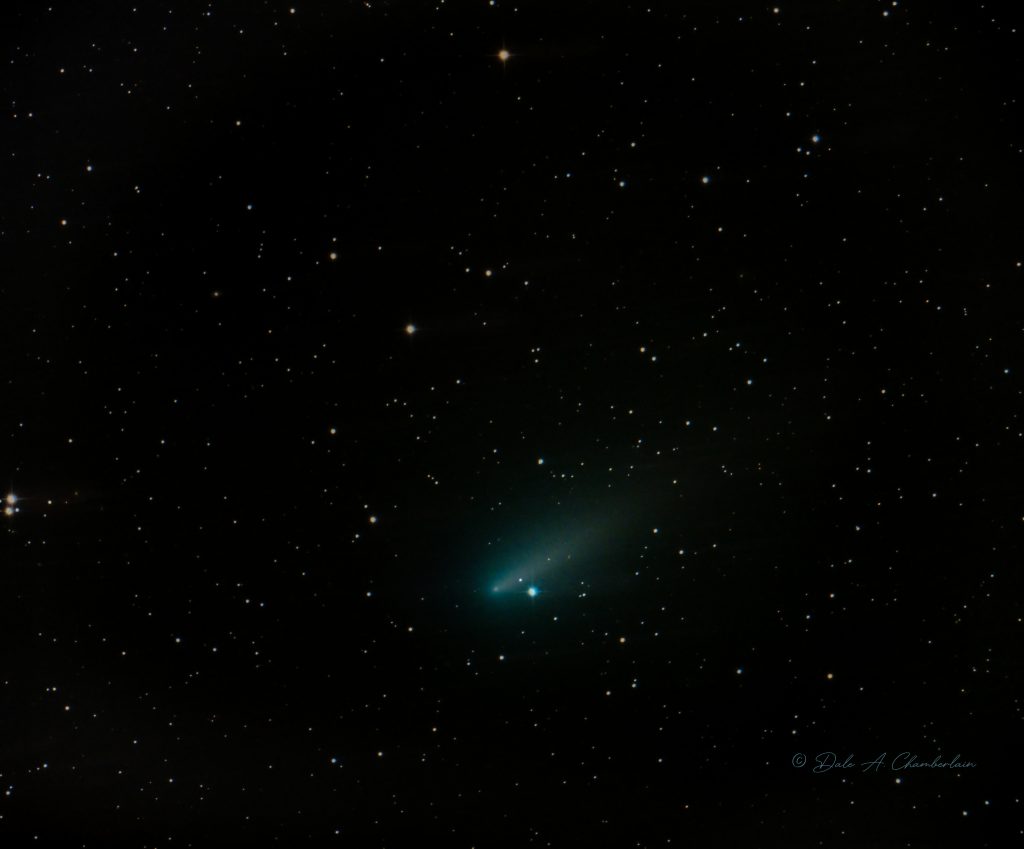
Object: C/2019 Y4 (ATLAS) (or Comet ATLAS) is a comet with a near-parabolic orbit discovered by the ATLAS survey on 28 December 2019. Around 22 March 2020, the comet started disintegrating. Such fragmentation events are very common for Kreutz Sungrazers. The comet continues to fade and will not reach naked eye visibility. C/2019 Y4 (ATLAS) was the brightest comet of 2020 on 30 March when it had an apparent magnitude of about 7, but is currently around magnitude 9, making it about six times dimmer than its maximum brightness. It is fainter than C/2017 T2 (PanSTARRS), C/2019 Y1 (ATLAS), and C/2020 F8 (SWAN). It can be found with a telescope in the constellation of Camelopardalis as a diffuse object. Due to the fragmentation event, the comet is not expected to brighten, and will not reach naked eye visibility. It will reach its nearest point to Earth on 23 May and come to perihelion (closest to the Sun) on 31 May. In April 2020, astronomers reported, on The Astronomer’s Telegram, the possible disintegration of Comet ATLAS. The comet has fragmented into at least 4 pieces. The fragmentation may be the result of outgassing causing an increase in the centrifugal force of the comet. NASA subsequently reported that the Hubble Space Telescope has identified "about 30 fragments on April 20, and 25 pieces on April 23."
Taken: April 23, 2020
Telescope: Astro-Tech 14” RC with 0.65x focal reducer
Mount: Paramount ME II unguided
Camera: ZWO ASI1600MC-Pro (cooled to -15C; gain 200/offset 50) Bin 1×1.
Focuser: Moonlite Nitecrawler
Rotator: Moonlite Nitecrawler
Filters used: Luminousity on a ZWO 8 position filter wheel
Exposures: 100×60 seconds for a total exposure time of 1.67 hours; calibrated with 40 dark frames, 40 flat frames with 40 dark-flats.
Seeing Conditions:
Image acquisition software: TheSkyX Pro; Processed with PixInsight and Photoshop CC 2020